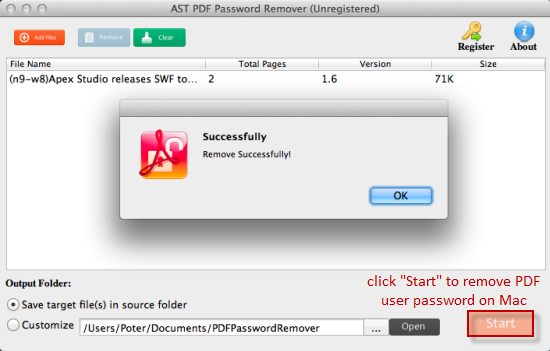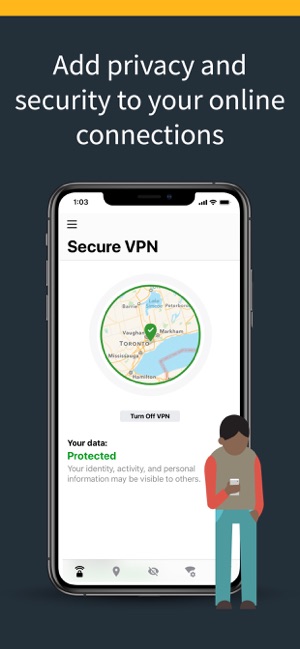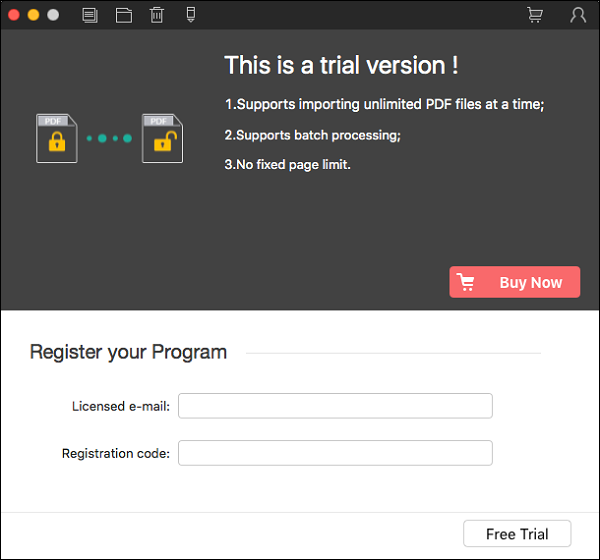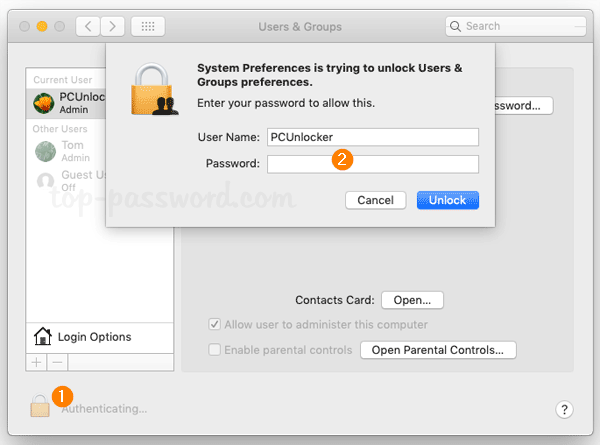Mac doesn't make password recovery as difficult as Windows does. Just boot your Mac into single-user mode or recovery mode, you can either create a new admin account or reset lost password of any existing account. No need to use Mac installer disc or third-party software. Method 1: Reset Forgotten MacOS Mojave Password in Single-User Mode. If you have an Apple ID tied to your user account on Mac, you can use it to reset password from the login window. The option should be available by default. Otherwise, you can enable it in System Preferences Users & Groups Allows user to reset password using Apple ID.
Lost or forgot Mac admin password and no installer disc? Here are 3 effective ways to easily reset Mac admin password without disk.
Even you have lost access to Mac, the built-in password recovery utility and terminal will always help you to sign in Mac after Mac admin password reset.

Way 1: Reset Mac admin password with another administrator
While you have another available administrator on Mac, please take this easy and safe way to reset your Mac password.
1. Power on Mac and login with another administrator.
For example, if you want to reset mac password for admin account 'isunshare fox', now please select another administrator 'deger' to sign in Mac. Keygen photoshop cs3 for mac.
2. Open System PreferencesUsers & Groups and remove the lock on editing with administrator password.
3. Select the admin account in user list, and click on Reset Password button next to the account.
4. Type a new password for selected account and reenter it to verify. Click Change Password and the Mac admin password would be reset or removed if you don't type any password for administrator account.
5. Restart Mac with admin account you just reset password to make new password effective.
Way 2: Reset Mac admin forgotten password with Apple ID
Before using Apple ID to reset forgotten Mac admin account password, it is necessary to make sure you have linked your admin account to Apple ID on accessible Mac.
Steps to reset Mac forgotten admin password with Apple ID:
1. Power on Mac and select the password-forgotten admin account to sign in.
2. Just type incorrect password, press Enter and you would get the message about you can reset password using your Apple ID. Click the icon after that.
3. Enter Apple ID and its password. And tap on Reset Password to continue.
Note: If you forgot apple id password, please reset it at first on login page through email or security questions you have set.
https://appleid.apple.com/
4. Click OK while another message prompts you will create a new keychain if you change the password for this user.
5. Type a new password twice for admin account and click on Reset Password button to make Mac admin password reset successfully with Apple ID.
6. Access Mac with new admin password and then you could create new keychain.

Simple steps to associate admin account to Apple ID on Mac:
1. Open System PreferencesUsers & Groups and right click the password-forgotten admin account. Choose Advanced Options. Or you can directly see Apple ID option under the user account. (Take Yosemite as example)

2. On Advanced Options window, click Set button next to the Apple ID option to add Apple ID.
3. Write down the existing Apple ID you want to associated with or create one now by Create Apple ID option if you have no Apple ID. Click OK and again to make sure the connection between user account and Apple ID.
4. Return to the admin account in Users & Groups. Now please check 'Allow user to reset password using Apple ID'. Then you could reset admin password with this Apple ID on Mac login screen whenever you want.
Way 3: Reset Mac admin password with password recovery utility
It will guide you how to reset Mac admin password with built-in password reset tool on Mac. And it always works even though you have no another administrator or have not associated admin account to Apple ID.
1. Start Mac and press Command + R when grey screen appears and hold on it until you see Apple logo.
2. Wait for Mac entering recovery mode.
3. While you access Mac in recovery mode, click Utilities on the top menu and select Terminal.
4. Type resetpassword in Terminal and press Enter. Please keep terminal open.
5. On following Reset Password Download airdroid for mac os. utility, choose a user you want to reset password. And click Next.
- If the account is not associated with Apple ID, you will be able to directly reset a new password for account on Mac.
- If it has been linked to Apple ID, you will have to input Apple ID password firstly and then could reset Mac user password.
After Mac user password reset, reboot Mac to make password recovery effective.
Note: If you still want to reset password for another user in recovery mode, please type 'resetpassword' again in Terminal and all of users will be listed again for you to choose and reset password.
 Removable Media Access Utility also lets you decrypt files encrypted using Symantec Endpoint Encryption Removable Storage versions earlier than Symantec Endpoint Encryption version 11.0. Removable Media Access Utility is available for the Windows operating system as well as the Mac OS X operating system.
Removable Media Access Utility also lets you decrypt files encrypted using Symantec Endpoint Encryption Removable Storage versions earlier than Symantec Endpoint Encryption version 11.0. Removable Media Access Utility is available for the Windows operating system as well as the Mac OS X operating system.
Besides above easy and safe ways, Terminal also helps you to reset Mac admin password with command line in single user mode, but it seems a little difficult and is not recommended. Surely if you think you can do it, please try. But if you cannot do it in proper way, probably your Mac would be damaged by something wrong.
- 1. Reboot Mac and enter single user mode by holding down Command + S.
- 2. Check filesystem errors and fix them on Mac with command: fsck -fy
- 3. Mount the root macOS drive as writable and allow changes to filesystem: mount -uw /
- 4. Reset mac user password with command line: passwd username
- 5. Enter the new password for user you type and reboot Mac.
Note:
1. If you cannot make sure the user name, please check it with command 'ls /Users' at first in Terminal.

2. And it is an extra step for Mac running OS X 10.7.3 and later. Load Open Directory with following command before running password reset command line.

launchctl load /System/Library/LaunchDaemons/com.apple.opendirectoryd.plist
Related Articles:
No Password For Mac User Password
Choose an account for automatic login
No Password For Mac User Software
- Choose Apple menu > System Preferences, then click Users & Groups.
- Click the lock , then enter the account password.
If you aren't logged in as an administrator, you're asked to enter an administrator name and password. - Click Login Options in the lower-left corner.
- Choose an account from the “Automatic login” menu, then enter the password of that account.
The account is now set up to log in automatically when your Mac starts up. You might still be asked to log in manually after logging out, switching back from another user account, or locking your screen.
If automatic login is unavailable
When manual login is required, the “Automatic login” menu is dimmed or doesn't show the account name. For example:
- If FileVault is turned on, manual login is required for all accounts. You can turn FileVault off.
- If an account uses an iCloud password to log in, manual login is required for that account. You might also see the message “A user with an encrypted home folder can't log in automatically.” When changing the account password, you can choose not to use the iCloud password.
Log in after sleep or screen saver begins
Find Mac Password
You might still need to enter your password when your Mac wakes from sleep or stops using the screen saver. You can change this behavior:
- Choose Apple menu > System Preferences, then click Security & Privacy.
- In the General pane, deselect ”Require password after sleep or screen saver begins.” Or leave it selected, but choose a time interval from the pop-up menu:
